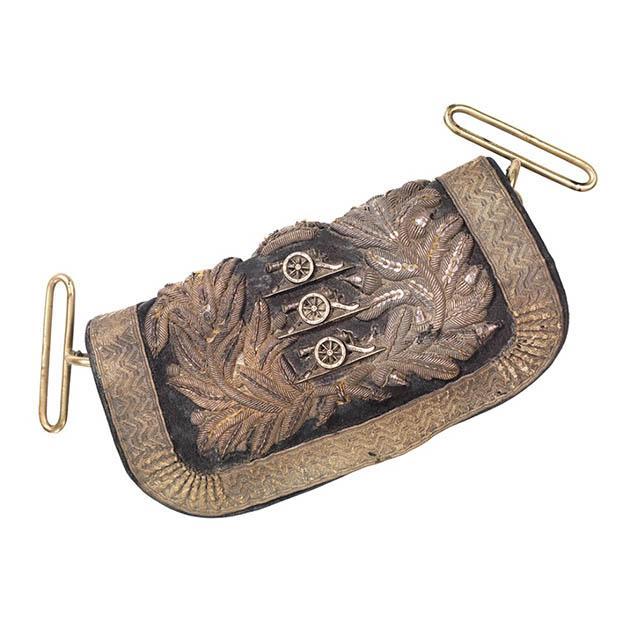
Dating to the period immdiately following the Crimean War (1853-56), this crossbelt pouch is a particularly fine example of its type. Pouches like this one would have been worn by officers inspecting or commanding the guns in the colony of New South Wales at battery locations like Fort Denison and Dawes Point, or on parades of mobile guns in the Domain or Hyde Park.
The NSW Artillery was a relatively small group of units within the colonial defence forces;its officer corps is likely to have numbered only a few dozen.
This pouch consists of a black leather body mounted with 'white metal' strap slings. Its design features three cannons on field carriages, one above the other, all cast from white metal. The field guns are surrounded by a rich wreath of leaves embroidered in silver bullion. The pouch flap is trimmed with silver lace.
The rich decoration indicates that the officer's pattern crossbelt pouch was a ceremonial symbol of rank rather than having the practical application of its notional use, that is, to hold cartridges for an officer's pistol.
Worn at a time when gold was our most important export and Britain was at war with the indigenous peoples of New Zealand (1845-72), objects such as this remind us of the measures taken by the colony in a bid to defend itself as a far-off outpost of the Empire.